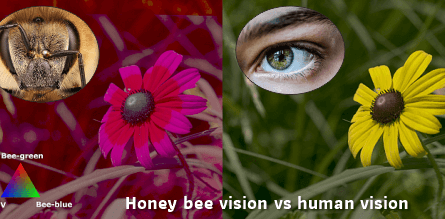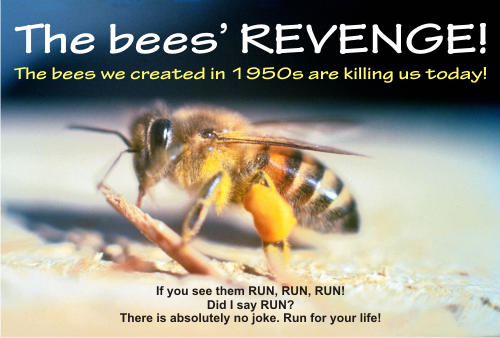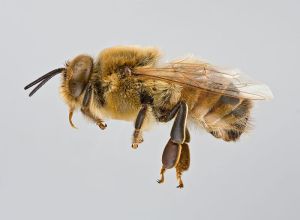There is a question in the IT industry that is often heard: “What is the most efficient and profitable way to allocate computer servers to ever-changing internet traffic?” Sounds complicated! Rocket science!
However, nature knows it all! Forager bees hold the answers we were looking for.
The way foragers search for nectar sources among billions of flowers has inspired a new algorithm for assigning computer servers – one that is now used by major web hosting companies in a rapidly growing global market worth over $50 billion.
It is called “THE HONEY BEE ALGORITHM”
and in 2016 it received the The Golden Goose Award
The AWARDEES are: John J. Bartholdi III, Sunil Nakrani, Thomas D. Seeley, Craig A. Tovey, and John Hagood Vande Vate, who were funded by the National Science Foundation, Office of Naval Research and the UK Government.

The discovery started in 1988. In 2008, at least one company that began using the Honey Bee Algorithm maximized its haul of web hosting revenue, and the bee algorithm was up to 20 percent more efficient than competing algorithms.
The The Golden Goose Award recognizes federally funded basic science that winds up having a big real-world impact.
So, what is so amazing about the way foragers gather nectar?
Well, there is no central authority, no boss to tell them what to do and where to go. No market consultants, no planners, no managing directors.
A colony of honey bees can extend itself over long distances (over 14 km) and in multiple directions simultaneously to harvest nectar or pollen from multiple food sources (called flower patches).
A small fraction of the colony constantly searches the environment, looking for new flower patches. These forager bees (aka scout bees) move randomly in the area surrounding the hive, evaluating the nectar (net energy yield!) of the flowers.
Those individuals that found a highly profitable food source go to an area in the hive called the “dance floor”, and perform a ritual known as the waggle dance. Through it the bee communicates the location of its discovery to other bees which will join them in the exploitation of the flower patch. After dancing, the forager returns to the food source it discovered to collect more food.
As long as they are evaluated as profitable, rich food sources will be advertised by the forager bees when they return to the hive. Recruited foragers may do the waggle dance as well, increasing the recruitment for highly rewarding flower patches.
Thanks to this autocatalytic process, the bee colony is able to quickly switch the focus of the foraging effort on the most profitable flower patches.
The whole discovery started one morning, in 1988, when Vande Vate heard the researcher Tom Seeley describing the organization of work in honey bee colonies and how bee foragers manage to distribute themselves wisely among local flower patches without any central authority.
Tom Seeley explained that a forager comes back to the hive knowing how much nectar a patch of flowers has. The forager then learns how “needy” the colony is for nectar by assessing how easy or hard it is to find a bee ready to receive the nectar and store it away.
If the forager struggles to find a bee, it means that the nectar is flowing freely and she and her fellow foragers will thus be very choosy.
If nectar is sparse and the forager has an easy time finding a bee, she will perform a vigorous “waggle dance,” recruiting other foragers to join it.
What was the experiment?
The researchers set up and varied artificial “nectar sources”. They labeled all the 4,000 forager bees for individual identification and monitored them. The bees distributed themselves in a way that constituted the best response to their changing environment – flower patches that vary constantly, coming in and going out of bloom according to the weather and the seasons.
From a systems engineering approach, the foraging should have been done based on “optimal distribution” – which will imply that at any given moment, if you add one new forager bee, that bee could go to any flower patch and get the same benefit to the colony in that moment.
But after observing the bees, the researchers concluded that under highly variable conditions, the honey bees’ approach actually does better than if they had evolved to find the “optimal” distribution in response to conditions at any given moment. The bees’ mode of operation is highly effective at efficiently accumulating nectar for the colony across a wide range of conditions.
Let’s compare the situations:
In the web hosting world, servers are like nectar foragers, while the dynamic community of clients asking to use the servers – anyone using the internet – is like the changing landscape of flower patches.
The clients pay in money, while the flowers pay in nectar. Shared web hosting servers operate by switching from one application to the next based on demand for any given application. Each server can run only one application at a time (for security reasons), so switching applications – like a honey bee switching flower patches – incurs a time, and therefore revenue penalty as the server wipes itself clean and loads a new application.
The best server allocation algorithm would need to respond to a highly dynamic environment and return the maximum total revenue – just like in a honey bee colony.
What did the researchers do?
The researchers designed an algorithm in which servers assessed the profitability of their clients and did their own “waggle dances” to communicate that information to other servers. In a test against a then state-of-the-art algorithm and two other potential methods, the researchers showed that their honey bee algorithm beat the competition. In their work, they got support from the U.K. government and the U.S. National Science Foundation.
So the next time you load up a webpage on your phone or laptop, you can thank the honey bees, and a team of federally funded researchers who let curiosity be their guide.
Here is how we find the Bees Algorithm explained by wikipedia:
“The bees algorithm mimics the foraging strategy of honey bees to look for the best solution to an optimization problem. Each candidate solution is thought of as a food source (flower), and a population (colony) of n agents (bees) is used to search the solution space. Each time an artificial bee visits a flower (lands on a solution), it evaluates its profitability (fitness).
The bees algorithm consists of an initialization procedure and a main search cycle which is iterated for a given number T of times, or until a solution of acceptable fitness is found. Each search cycle is composed of five procedures: recruitment, local search, neighborhood shrinking, site abandonment, and global search.”

This algorithm was improved over time, now there are a number of improved or hybrid versions of the BA, each of which focuses on some shortcomings of the basic bee algorithm (BA). Among these variants: fuzzy or enhanced BA (EBA), grouped BA (GBA), hybrid modified BA (MBA) and so on. And all of them start from the bees’ way of foraging for nectar.
Do we need honey bees?
Let’s see: We eat all their products: honey, pollen, propolis, royal jelly, beebread. We kill them to make supplements: apilarnil. We breathe their air. We learn from the way they behave: BA (the bees algorithm).
They pollinate the plants so we can have food.
Do we need them?
From what I see, we can only do this: 
So the next time you load up a webpage on your phone or laptop, you can thank the honey bees, and a team of federally funded researchers. Thank you all.
================
References:
https://en.wikipedia.org/wiki/Bees_algorithm
http://www.goldengooseaward.org/awardees/honey-bee-algorithm
http://www.slate.com/articles/video/video/2017/02/honey_bee_algorithm_builds_a_faster_internet_video.html




